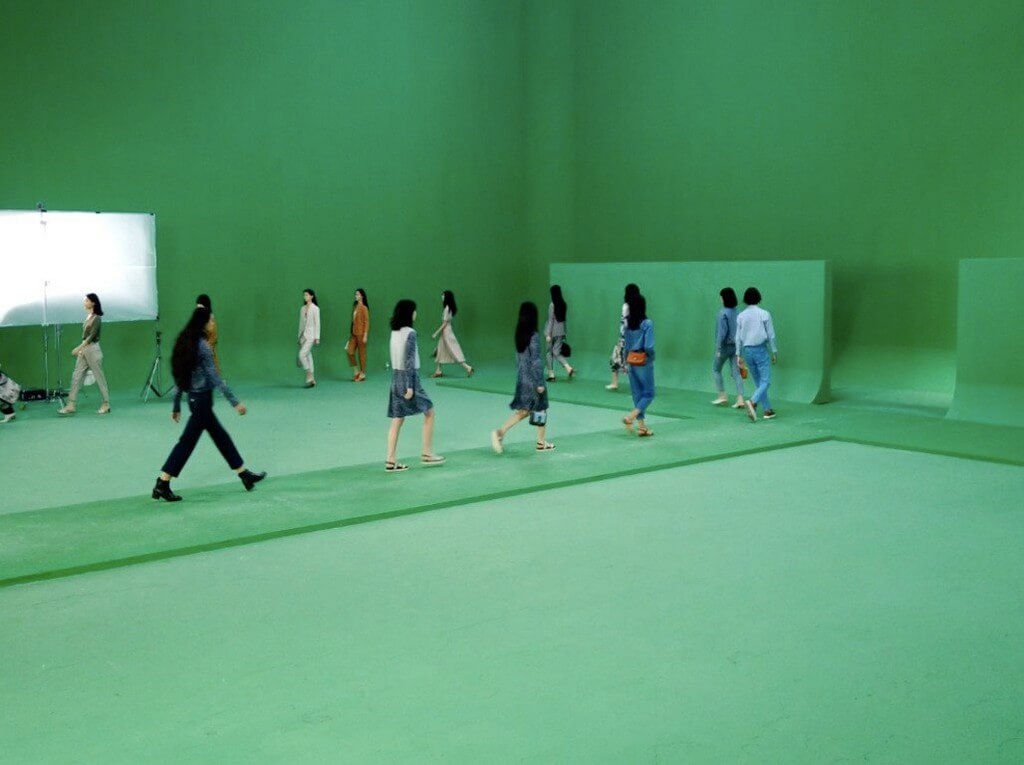Virtual Fashion: Elaborate
08/01/2022 2022-01-08 12:55Virtual Fashion: Elaborate
Virtual Fashion, over a decade, was unattainable. Ten A decade ago, there was a circumstance of Black Mirror termed “ Fifteen Million Merits”, where huddled commoners furiously laboured in order to dress not themselves, but their idealised digital doppelgängers, in little caps. It appeared far- ran, but was formerly fact. Metaverses — 3D virtual spaces — had before begun to surface in dialogue chambers and computer games comparable as The Sims and World of Warcraft, colonized by abstracts. And they all had to wear clothing.
It’s a strange notion that clothes don’t subsist, for people who are n’t real. But fashions that subsist purely digitally have been around for a while, albeit circumscribed to online platforms alike as IMVU and Second Life. The rearmost, planted in 2003, is a world rather than a game, with no set intentions, a virtual space for socialising, and shopping.

Second Life’s frugality is grounded on stoner-generated content. Residers produce particulars similar to hairstyles, toenails and skin tones, which are vended for Linden bones — the platform’s in- world currency — and can be “ cashed out” to US bones.
Clothing across these metaverses generally looks analogous. Pieces source real- life high fashion, occasionally blatantly ripping it off, with the kind of varying success and audacity you see in utmost fake requests. A stoner of The Sims recreated the review- print Christian Dior dress famously worn by Sarah Jessica Parker on Sex and the City in 2000. In Alternate Life, there are also precise digital recreations of Bottega Veneta’s Arco bag, Balenciaga’s Arch-bottomed Hourglass and Prada pail headdresses dotted with Triangle totems.
The coming step is sanctioned brand countersign — markers creating digital content, and charging for the honor of wearing an imaginary totem. The Nintendo game Animal Crossing New Horizons captured the fashion imagination last summer. Maison Margiela 6, Valentino and Marc Jacobs contributed aesthetics for the game’s roughly 30m players to download and dress up their characters, a community of anthropomorphic creatures.

Where next for digital fashion? The answer could, maybe, lie with DressX, a two- time-old launch-up that offers “ digital-only collection” — meaning missing clothes, realised by both traditional and 3D contrivers and available to add to photos of real- life people. The performing images can also be uploaded to social media. According to authors Daria Shapovalova and Natalia Modenova, it’s “ a cover for buying physical clothes solely for content creation.” Their backgrounds are in fashion — they headed Mercedes-Benz Fashion Week in Kyiv, Ukraine — but their base in California and a seductiveness with stoked reality and digital spheres lead to the conception for DressX. The idea is also tied to current enterprises around presto fashion, and the assiduity’s cycle of consumption and waste — a 2015 study by the charity Barnardos indicated that garments are worn on average seven times before disposal, contributing to an estimated 92m tonnes of periodic cloth waste encyclopedia ally.
Other companies have explored this space The Fabricant created digital apparel for incorporations, uniting with the likes of Adidas and Tommy Hilfiger; Scandinavian fast fashion marker Carlings cooked digital clothes to be uploaded to “ dress” people in photographic images. But the interface of DressX is slicker, simpler.
The contrivers at DressX are n’t ( yet) that notorious — there’s no Dior, no Chanel. The most familiar name is presumably Gary James McQueen, the whoreson of Lee Alexander McQueen, who was responsible for some of the late developer’s fabrics, and whose clothes are also theatrical, pigmented with literal references to Puritanical and Tudor. The other well given names are those of artists — images by Van Gogh, Cézanne and Monet applied to sweatshirts.
Yet investors feel to have faith that people will pay. In July, DressX raised$ 2m in a seed round, and launched an app before this summer, aiming to further simplify the process of druggies buying an image of a dress rather than the dress itself. A revolutionary, resource- saving romantic volition to consumption, or the ultimate pessimistic reflection of an image-obsessed dystopia? Only the future will tell.
Virtual fashion shows have helped the industry cope with the losses that have occured over the last 2 years due to the ongoing pandemic. Through the virtual fashion shows, various brands and designers were able to move their stores online and continue their sales. In JD Institute of Fashion Technology, the fashion designing courses are structured to train the aspiring designers the importance of virtual designs, and the various softwares that will help them achieve their ultimate goal in the evolving fashion industry.













